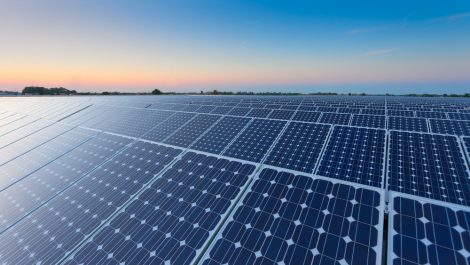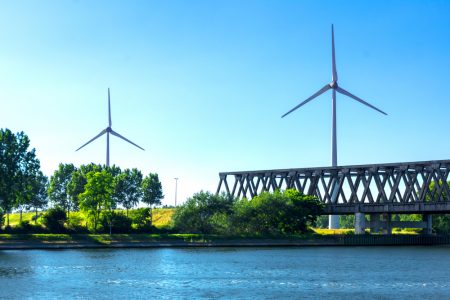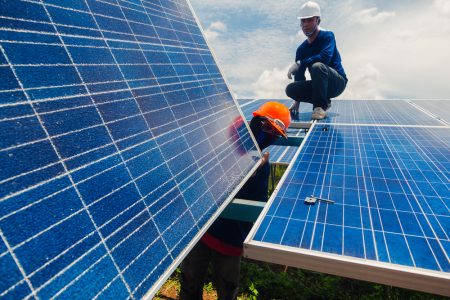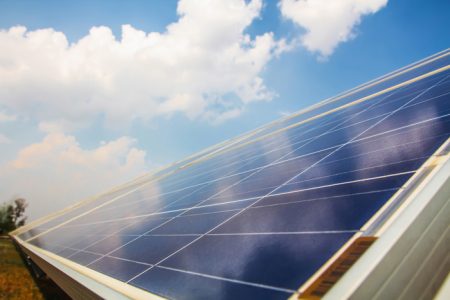Solar Energy Industries Association’s 10 Year Roadmap for Building the Solar Economy in the U.S.
The end of September brought one of the largest solar power events in North America, Solar Power International, to Salt Lake City, Utah. The purpose of SPI is to gather solar, smart energy, energy storage and hydrogen fuel cell professionals together for 4 days of networking, education and innovation. Companies from all over are welcomed to showcase their latest and greatest innovations at this event with like-minded individuals who all share a common vision.

The most vital thing that came from this year’s event was the announcement of a new 10 year plan from the Solar Energy Industries Association (SEIA). One of the main goals that came from their plan was having solar energy account for 20% of all U.S. electricity by 2030. Today, solar energy in the U.S. only makes up about 2.4% of the total energy. While this goal may seem unachievable now, SEIA is certain it’s attainable with the next 10 years.
The Solar+ Decade: Roadmap for Building the Solar+ Economy
How exactly does SEIA’s 10 year roadmap plan to reach this goal by 2030? The new plan is built around a four pillar system to reach this target. These pillars are collaborating aggressively, the benefits of market accelerators, using market levers and policy drivers and managing growth of the solar industry responsibly.
- Aggressive Collaboration This pillar emphasizes the need to work together. SEIA suggests the collation of compatible individuals in other renewable energy sectors.
- Capitalizing on Market Accelerators Marketing accelerators like energy storage, carbon reduction goals and electrification are all important for the growth of solar energy. By taking advantage of these accelerators, the 20% goal is reachable.
- Market Levers and Policy Drivers In this third pillar, SEIA suggests “driving down costs, developing new financial mechanisms and building stronger federal and state policy.” The importance of managing these particular levers could “dramatically increase or limit solar deployment” so the success of this pillar is so important.
- Managing Growth as an Industry The final pillar in SEIA’s roadmap is to successfully manage and anticipate challenges and changes in the industry. With a predicted explosion of growth, the solar industry will have to manage this in a responsible way for advancement.
The Importance of 20% Solar Energy by 2030
Why is this all so important? Not only would this be a positive benefit for the environment, the payoff to the U.S. economy would be exponential. As SEIA CEO and President, Abby Hopper, stated “solar could add more than $345 billion to the U.S. economy over the next ten years, reaching $53 billion annually.” It would also provide more jobs to around 600,000 individuals, as well as lower utility costs, provide cleaner air and help with climate solutions that don’t negatively affect the economy.
At Intersect Energy, we are committed to providing outstanding turnkey energy solutions to all our customers. All projects are done with the highest-quality materials backed by our team of experienced professionals that provide the best workmanship possible. We aim to reduce operating costs and be a source of local green energy. Make sure you keep up with the latest news in the world of renewable energy by following us on LinkedIn!
 Even though Google has been known to make large investments in
Even though Google has been known to make large investments in  Countries around the world have committed to a clean future by investing in renewable energy. Since 2010, clean energy has made its mark on the world economy. 2019 marks a record-breaking year in renewable energy investment, as the investment is on course to reach
Countries around the world have committed to a clean future by investing in renewable energy. Since 2010, clean energy has made its mark on the world economy. 2019 marks a record-breaking year in renewable energy investment, as the investment is on course to reach  The era of renewable energy is underway! The public is raving about renewable energy and it’s social impact because it’s cleaner, high-tech, provides new jobs and is the future of energy. As customers have been demanding options for 100% renewable energy, three U.S. electricity providers have made that possible for customers.
The era of renewable energy is underway! The public is raving about renewable energy and it’s social impact because it’s cleaner, high-tech, provides new jobs and is the future of energy. As customers have been demanding options for 100% renewable energy, three U.S. electricity providers have made that possible for customers. Health Benefits and Potential Costs
Health Benefits and Potential Costs The Garden State is paving the path to achieve 100% clean energy by 2050. To begin the process, Gridworks, GridLab and the Center for Renewables Integration joined forces to outline the benefits and necessary steps to reach New Jersey’s goal of 100% clean energy in their 2019 Energy Master Plan.
The Garden State is paving the path to achieve 100% clean energy by 2050. To begin the process, Gridworks, GridLab and the Center for Renewables Integration joined forces to outline the benefits and necessary steps to reach New Jersey’s goal of 100% clean energy in their 2019 Energy Master Plan. With over 2 million solar customers in the U.S., new technology to help store solar power is on the rise. This technology is helping to reduce the cost of solar installations and is saving money for local governments. Solar power and the Solar Energy Industries Association (SEIA) are joining forces with the National Renewable Energy Laboratory (NREL) and many others to develop a new automated solar permit software for distributed solar storage.
With over 2 million solar customers in the U.S., new technology to help store solar power is on the rise. This technology is helping to reduce the cost of solar installations and is saving money for local governments. Solar power and the Solar Energy Industries Association (SEIA) are joining forces with the National Renewable Energy Laboratory (NREL) and many others to develop a new automated solar permit software for distributed solar storage. The good news just keeps coming in for renewable energy! With the U.S. making stronger efforts to reduce pollution and implement new forms of alternative energy, there has been a steady power shift in relation to energy usage. This past April was a milestone for renewable energy, and the total generating capacity of renewable energy amounted to 21.56%, while coal’s capacity dropped from 23.04% to 21.55%. This shows that a significant change is on the horizon as renewable energy is becoming more popular than coal. Natural gas, as well as
The good news just keeps coming in for renewable energy! With the U.S. making stronger efforts to reduce pollution and implement new forms of alternative energy, there has been a steady power shift in relation to energy usage. This past April was a milestone for renewable energy, and the total generating capacity of renewable energy amounted to 21.56%, while coal’s capacity dropped from 23.04% to 21.55%. This shows that a significant change is on the horizon as renewable energy is becoming more popular than coal. Natural gas, as well as  Renewable energy sources such as hydroelectric power,
Renewable energy sources such as hydroelectric power,  The Big Apple is known for its beautiful skyline and architecture—but these buildings will go through some major changes in the next couple of months. On Earth Day, Mayor Bill de Blasio signed legislation that requires buildings 25,000 square feet or larger to cut greenhouse-gas emissions 40% by 2030. There are just about 50,000 buildings in the city that are subject to these new rules, and these buildings account for about a third of the cities carbon footprint. The city has a goal to reduce carbon emissions by 80% by 2050.
The Big Apple is known for its beautiful skyline and architecture—but these buildings will go through some major changes in the next couple of months. On Earth Day, Mayor Bill de Blasio signed legislation that requires buildings 25,000 square feet or larger to cut greenhouse-gas emissions 40% by 2030. There are just about 50,000 buildings in the city that are subject to these new rules, and these buildings account for about a third of the cities carbon footprint. The city has a goal to reduce carbon emissions by 80% by 2050.